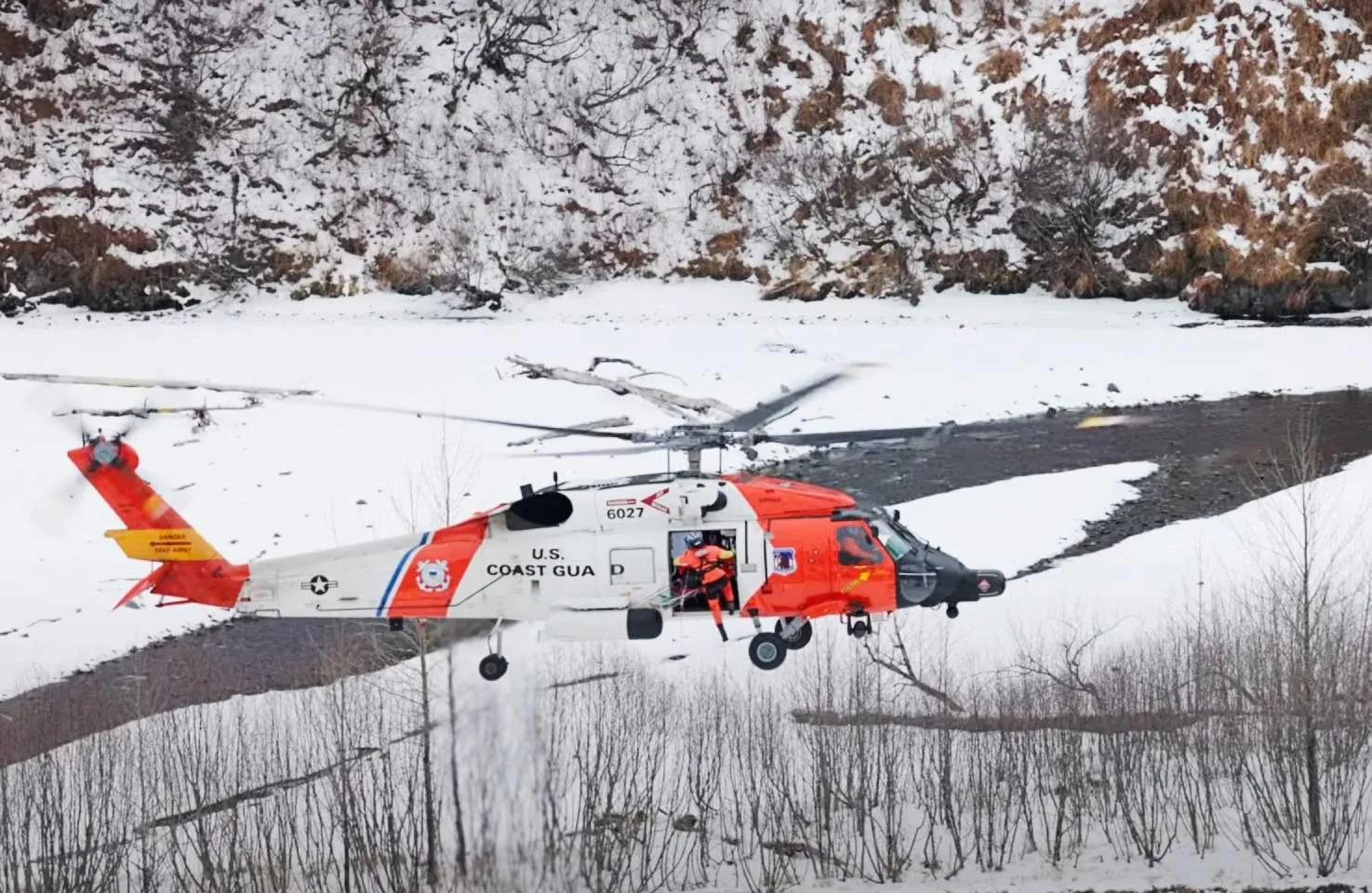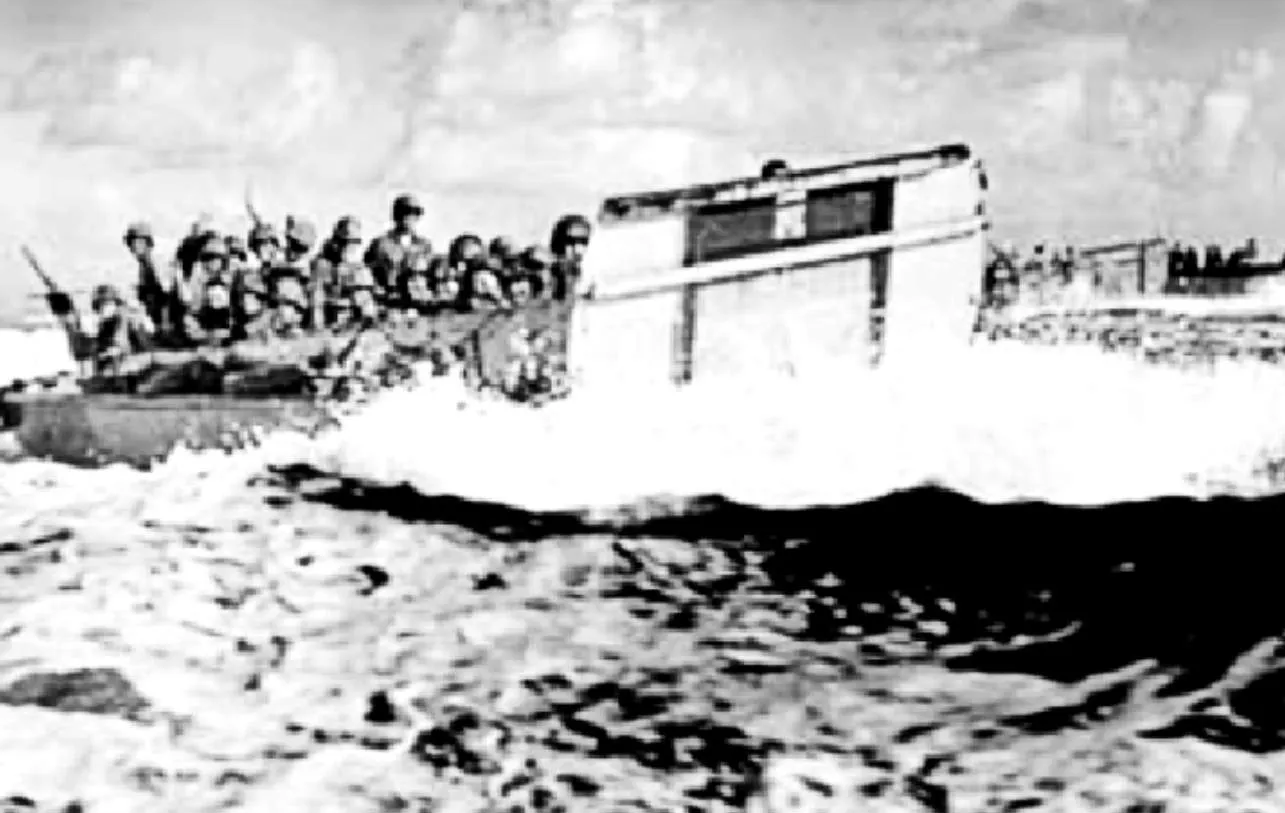High Seas Danger: Five Daring US Coast Guard Missions
The US Coast Guard has been saving lives, tracking foreign spy ships, and arresting drug lords for more than 200 years yet little is known about how the high-seas operatives work.
They are responsible for border security and protecting Americans from maritime threats across a vast geographical area that stretches from Puerto Rico to Alaska, Hawaii, Guam, and beyond. More than 50,000 members serve as first responders, rescuing those stranded at sea, while Coast Guard Intelligence is integrated into Coast Guard commands at every level.
Here are five of the many thrilling situations that have tested ‘Coasties’ to their limits.

1. Search and Rescue (SAR), Alaska 2022
When the distress call came in from a three-man fishing boat near Whittier, Alaska, in December 2022, the Coast Guard SAR team in Kodiak sprung into action. The Coasties were already suited up for a training exercise so their MH-60T Jayhawk helicopter was out of the door in a minute and the team quickly located the Privateer fishing boat as it drifted perilously close to a rocky shoreline. The team lowered Coast Guard ‘rescue swimmer’ David McClure so he could harness all three survivors and hoist them into the helicopter individually - one fisherman clinging to a dog - with just 30 seconds to spare before Privateer smashed into the rocks.

2. 9/11 and Operation Noble Eagle
Coast Guard Lt. Michael Day was in Staten Island overseeing lower Manhattan when he saw a plume of smoke coming from the World Trade Center. Then the second plane hit. Over the next few hours, Day helped organize the largest maritime evacuation in history - larger, even, than the rescue of 338,000 British and French troops at Dunkirk. The Coast Guard provided air and maritime security, evacuated civilians by water, and under Operation Noble Eagle deployed on port security missions, SAR efforts, and clean-up operations. Months after 9/11, the Coast Guard left the Department of Transportation and joined the newly formed Homeland Security. As for Day, he is better known today as Rear Admiral Michael Day.
3. Counterintelligence and tracking a Russian spy ship, 2023
The US was on red alert once again in January 2023 when the Coast Guard spotted a suspected Russian spy ship ‘loitering’ off the coast of Hawaii for several weeks. The timing was suspect as the spy ship arrived amid rising tension between Washington and Moscow over the Ukraine war and Moscow’s veiled threats about deploying nuclear weapons. The vessel was identified as a Vishnya-class intelligence ship Kareliya (535). Satellite photos showed it in international waters, yet coming as close as 25 miles to the Hawaiian shore. It’s not the first time the ship has been spotted, with Kareliya also making an appearance in May 2021. As part of its daily operations, the Coast Guard tracks all vessels in the Pacific area, covering more than 14m square miles of land and sea policed through stations in Hawaii and in American Samoa, Saipan, Guam, Singapore, and Japan.
"The brand new social experience where you activate your gaming skills as you train like a spy."
- TimeOut
Take on thrilling, high-energy espionage challenges across different game zones.


4. Chinese Spy Balloon Recovery, February 2023
When a Chinese spy balloon drifted across the US in early 2023, it was shot down by a US F-22 with a single air-to-air missile over the coast of South Carolina. The Coast Guard and US Navy quickly moved into position to collect debris from a field stretching across seven miles. The US wasn’t clear if there was hazardous material inside the balloon at that stage, so the Coast Guard imposed a security zone off Surfside Beach across a 10-nautical mile area to block vessels entering without permission and prevent potentially hazardous material washing up on shore. Working with divers and other US intelligence agencies, the debris was successfully collected and shipped to an FBI laboratory in Virginia for analysis.

5. Coast Guard Codebreakers and WWII Heroism
Coast Guard Intelligence has its roots in the 1915 assignment of a Chief Intelligence Officer at HQ during WWI and the intelligence remit grew during WWII. The agency had many crucial missions during the Second World War. Among them, cryptologist Elizebeth Friedman - a civilian member of the US Coast Guard - was part of CG Unit 387 and helped decrypt thousands of coded messages sent from German clandestine circuits. Separately, Coast Guard units also fully manned more than 350 naval ships and 800 cutters, as well as thousands of amphibious-type assault craft. Coast Guard Signalman First Class Douglas Munro, providing covering fire to evacuating Marines at Guadalcanal, southwestern Pacific Ocean. Munro, killed in action during a firefight, was awarded the Medal of Honor for his extraordinary heroism.
SPYSCAPE+

Join now to get True Spies episodes early and ad-free every week, plus subscriber-only Debriefs and Q&As to bring you closer to your favorite spies and stories from the show. You’ll also get our exclusive series The Razumov Files and The Great James Bond Car Robbery!


Gadgets & Gifts
Explore a world of secrets together. Navigate through interactive exhibits and missions to discover your spy roles.
Your Spy Skills
We all have valuable spy skills - your mission is to discover yours. See if you have what it takes to be a secret agent, with our authentic spy skills evaluation* developed by a former Head of Training at British Intelligence. It's FREE so share & compare with friends now!
* Find more information about the scientific methods behind the evaluation here.


Stay Connected
Follow us for the latest
TIKTOK
INSTAGRAM
X
FACEBOOK
YOUTUBE